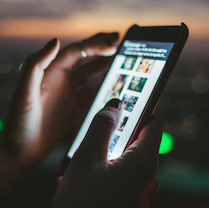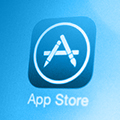BLOG

iOS Apps: Using In-App Purchases or Third Party Processing
A common question we receive is about monetization options for iOS apps. Most people are curious about the rules surrounding Apple’s in-app purchases and are hoping they can avoid giving Apple a cut of each purchase. Unfortunately Apple has strict guidelines around in-app purchases and in most cases, you will need to use them if you want to have your app approved for the App Store.
First, let’s talk about the different types of in-app purchases.
Consumables
- Consumables are used for items that are meant to be used once in the app and then the user would need to make another purchase to use the item again. Consumables are used frequently in games. Examples are player lives in Candy Crush or an in-game currency, like Robux in Roblox.
Non-Consumables
- Non-Consumables are purchased only once and remain available to the user. An app might have premium features that are available as non-consumables. Once the user makes the purchase, those features will remain available to the user for as long as they have the app. An example of this would be upgrading to a premium version of an app that does not require renewal.
Auto-Renewable Subscriptions
- A subscription allows a user to subscribe to a service or content that is periodically updated. Auto-Renewing subscriptions are set for a certain amount of time, commonly a month or year. Users will automatically be billed at the end of each subscription cycle until the user chooses to cancel.
Non-Renewing Subscriptions
- A non-renewing subscription is a subscription that won’t automatically renew after each cycle. The user will only be billed once, and at the end of the subscription the user will need to manually subscribe again to continue to receive the content.
With these four different types of purchases, Apple is able to provide different options for users to monetize their app. The unfortunate part is that Apple will take a 30% cut on all purchases. It doesn’t matter if it is a consumable or a subscription, the 30% cut is always the same.
How do you hack in-app purchases in iOS Apps?
You don’t. Apple has a rigorous approval process for applications. An application that falls outside of its guidelines will face Apple Store app rejection. In-app purchases must be used to allow your users to unlock any features or functionality within your app. Apple’s guidelines restrict you from directing customers to other purchasing mechanisms when it comes to accessing in-app content or features.
Most apps are going to fall into the above category and will be required to use in-app purchases and give Apple the 30% cut. However, there are a handful of exceptions where apps can use other payment methods. They tend to be around functionality that you’re buying that are delivered outside of the app.
iOS Application Types that Do No Need In-App Purchasing
Reader Apps
- Apps can allow users to access previously purchased content or subscription content. Specifically, this is for magazines, newspapers, books, audio, music, or video content. Amazon’s Kindle app for iOS is a perfect example. Users are only allowed to purchase a digital product through the iOS device browser, then Amazon delivers the digital content to the Kindle app for use.
Multiplatform Services
- Apps that have multiple platforms may allow users to access content, features, or subscriptions that they have already acquired on other platforms or websites. These items will also need to be included as in-app purchases within the app though.
Enterprise Services
- If you sell your app directly to organizations or groups for their employees or students to use, then you are allowed to use purchase methods in addition to in-app purchases. Any purchases by a consumer, single-user, or family must use in-app purchases.
Person-to-Person Experiences
- If your app enables the purchase of real time experiences between two individuals, you may use payment methods outside of in-app purchases. Examples of this include tutoring, medical consultations, real estate, or fitness training. One to few and one to many real time experiences must use in-app purchases.
Goods and Services Outside of the App
- If your app enables users to purchase physical goods or services that will be consumed outside of the app, then you MUST use purchase methods other than in-app purchases.
Free Stand-alone Apps
- If you have a free app that acts as a stand-alone companion to a paid web-based tool, then you do not need to use in-app purchases. But you are not allowed to have any purchasing inside of the app, or calls to action for purchase outside of the app.
In most cases, a mobile app will need to use in-app purchases, but double check the above list to see if your app qualifies for one of the few exceptions. This would save you from having to give Apple 30% of each purchase. If you are looking to build a new application, it could be smart to strategize around one of the ways you can use outside-app purchasing.
YOU MAY ALSO LIKE
May 22nd, 2020 - Brian T.
Building iOS Apps with SwiftUI

Aug 28th, 2020 - By Brian T.
Native vs. Hybrid Apps: The on-going discussion


